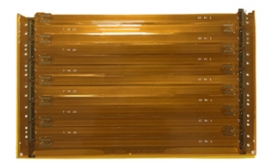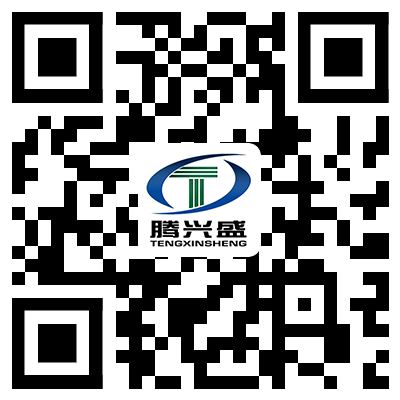
Shenzhen Tengxingsheng Electronics Co., Ltd.
Contact: Miss Wen
Tel: 0755-23286182
Mob: 13570819121
QQ: 1456258664
QQ: 2316907424
Fax: 0755-23286183
Email: txspcbsc@163.com txspcb@163.com
Web : en.txspcb.cn
Add: 3rd Floor, Building 3, Jinkang Industrial Park, No. 1 Shajing Road, Baoan District, Shenzhen
1. What is FPC
Flexible FPC circuit board is a highly reliable and excellent flexible printed circuit board made of polyimide or polyester film. Referred to as soft board or FPC.
Features: It has the characteristics of high wiring density, light weight and thin thickness; it is mainly used in mobile phones, notebook computers, PDAs, digital cameras, LCM and many other products.
Second, the variety of FPC
Single layer FPC
It has a layer of chemically etched conductive patterns, and the conductive pattern layer on the surface of the flexible insulating substrate is rolled copper foil. Insulating substrates can be polyimide, polyethylene terephthalate, aramid and polyvinyl chloride. Single-layer FPC can also divide the following four sub-categories:
1. Single-sided connection wire pattern without cover layer is on the insulating substrate, and there is no cover layer on the surface of the wire. The interconnection is completed by soldering, fusion welding or pressure welding, which is commonly used in early telephones.
2. Compared with the former type, the single-sided connection with a cover layer only has an additional layer of cover layer on the surface of the wire. When covering, the pads need to be exposed, and it is simply not necessary to cover the end area. It is one of the most widely used single-sided flexible PCBs, and is used in automotive instruments and electronic instruments.
3. Double-sided connection connection pad interface without masking layer can be connected on the front and back sides of the wire. A via hole is opened on the insulating substrate at the pad, and this via hole can be punched first at the desired position of the insulating substrate. made by machining, etching or other mechanical methods.
4. The difference between the two-sided connection with a cover layer is that there is a cover layer on the surface, and the cover layer has via holes, which allows both sides to be terminated, and still adhere to the cover layer, which consists of two layers of insulating materials and a layer of metal conductors. production.
Double-sided FPC
Double-sided FPC has a conductive pattern etched on both sides of the insulating base film, which increases the wiring density per unit area. The metallized hole connects the patterns on both sides of the insulating material to form a conductive path to meet the design and application of flexibility. The masking film protects single and double-sided conductors and indicates where the components are placed. According to the needs, metallized holes and masking layers are optional, and this type of FPC is less used.
Multilayer FPC
Multilayer FPC is to laminate 3 or more layers of single-sided or double-sided flexible circuits together, through drilling and electroplating to form metallized holes, and to form conductive paths between different layers. In this way, there is no need to choose a complicated welding process. Multilayer circuits have huge utility differences in terms of higher reliability, better thermal conductivity, and easier installation capabilities. Double-sided circuit board

The advantage is that the substrate film is lightweight and has excellent electrical properties, such as a low dielectric constant. The multi-layer flexible PCB board made of polyimide film is about 1/3 lighter than the rigid epoxy glass cloth multi-layer PCB board, but it loses the advantages of single-sided and double-sided flexible PCB. flexibility, most of these products do not require flexibility. Multi-layer FPC can further share the following types of dividends:
1. Flexible insulating substrate products are manufactured on flexible insulating substrates, and the product rules are flexible. This kind of structure usually bonds the double-sided ends of many single-sided or double-sided microstrip flexible PCBs together, but the core parts are not bonded together, and then has a high degree of flexibility. In order to have a high degree of flexibility, a thin, suitable coating such as polyimide can be used on the conductor layer instead of a thicker laminated mask layer.
2. Soft insulating substrate products are manufactured on soft insulating substrates, and their products can be flexed regularly. This type of multilayer FPC is made of a flexible insulating material, such as a polyimide film, laminated into a multi -layer board , which loses its inherent flexibility after lamination.
3. FPC manufacturing process
So far, the FPC manufacturing process is almost all processed by the subtractive method (etching method). Usually, the copper clad laminate is used as the starting material, and the photolithography method is used to form the resist layer, and the copper surface of the unnecessary part is etched to form the circuit conductor. Etching has processing constraints for fine circuits due to issues such as undercuts.
Depending on the processing difficulties of the subtractive method, it may be difficult to maintain a high yield of fine circuits, and the semi-additive method is considered to be a useful method, and various plans for the semi-additive method have been proposed. An example of microcircuit processing using the semi-additive method. The semi-additive process uses polyimide film as the starting material, and firstly casts (coats) a liquid polyimide resin on a suitable carrier to form a polyimide film.
Then use sputtering method to form a crystal planting layer on the polyimide base film, and then use photolithography to form a resist layer pattern of the reverse pattern of the circuit on the crystal planting layer, which is called anti-plating layer. Conductor circuits are formed by electroplating in the blanks. Then remove the resist layer and unnecessary crystal planting layer to form the first layer of circuit. Coat the photosensitive polyimide resin on the first layer of circuit, use photolithography to form holes, protect the layer or the insulating layer for the second circuit layer, and then sputter on it to form a crystal planting layer as the first The base conductive layer of the two-layer circuit. By repeating the above process, a multilayer circuit can be constructed.
Using this semi-additive method, ultra-fine circuits with a pitch of 5um and a via hole of 10um can be processed. The key to the fabrication of ultrafine circuits by the semi-additive method lies in the function of the photosensitive polyimide resin used as an insulating layer.
Fourth, the composition of materials
1. Insulating film
The insulating film forms the base layer of the circuit, and the adhesive bonds the copper foil to the insulating layer. In a multi-layer design, it is then bonded to the inner layer. They are also used as a protective mask to shield the circuit from dust and moisture, and to reduce stress during flexing, the copper foil forms the conductive layer.
In some flexible circuits, rigid members composed of aluminum or stainless steel are used, which can provide dimensional stability, physical support for the placement of components and wires, and stress relief. The adhesive bonds the rigid member and the flexible circuit together. Another material that is sometimes used in flexible circuits is an adhesive layer, which is formed by coating both sides of an insulating film with an adhesive. Adhesive plies provide environmental protection and electrical insulation, as well as the ability to eliminate one layer of film and have the ability to bond multiple layers with fewer layers.
2. Conductor
Copper foil is suitable for use in flexible circuits, and it can be electrodeposited (ED) or plated. The surface of the electrodeposited copper foil is glossy on one side, while the processed surface on the other side is dull and dull. It is a flexible material that can be made in many thicknesses and widths, and the matte side of ED copper foil is often specially treated to improve its adhesion. In addition to flexibility, wrought copper foil also has the characteristics of hard lubrication, which is suitable for applications requiring dynamic deflection.
3. Adhesive
In addition to being used to bond insulating films to conductive materials, adhesives can also be used as a masking layer, as a protective coating, and as a masking coating. The main difference between the two is the application method used. The cover layer is bonded to the cover insulating film to form the circuit of the laminated structure. The screen printing technique of choice for the mask coating of the adhesive. High Precision Multilayer Circuit Board
Not all laminate structures contain adhesives, and laminates without adhesives result in thinner circuits and greater flexibility. Compared with the laminated structure based on adhesive, it has better thermal conductivity. Due to the thin structural features of the adhesiveless flex circuit, and because the thermal resistance of the adhesive is eliminated and then the thermal conductivity is improved, it can be used in working environments where the flex circuit based on the adhesive laminate structure cannot be used. .
Mob: 13570819121
Email: txspcbsc@163.com
Web : www.retirewealthnetwork.com
Add: Jinkang, No. 1 Shajing Road, Baoan District, Shenzhen
3rd Floor, Building 3, Industrial Park

SWEEP